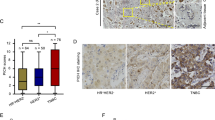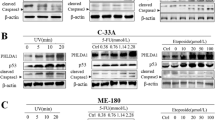Abstract
Tumor suppressor gene plays an important role in maintaining the homeostasis between cell loss and growth. Fragile histidine triad (FHIT) gene found recently was studied in a deep going way; it becomes the focus as a result of its role of anti-tumor in human various type of tissue. Due to the high efficiency of FHIT gene benefiting the anti-tumor, it is proposed as a candidate of tumor suppressor gene though there are several opposite opinions.
We stress the summary of some properties of FHIT gene on proapoptosis according to the published data which showed the stronger proapoptotic function of FHIT gene; the apoptosis induced by FHIT depends on the expression level and status of FHIT; and FHIT gene can alternate the cell cycling properties and reduce the tumorigenic potential; the apoptotic process induced by FHIT has no relation to p53 gene. In a ward, in consideration of its multiple functions against malignancies, FHIT gene deserves attention and exploration as a selective target for searching the mechanism of tumorigenesis and clinical therapeutic applications in further.
Similar content being viewed by others
References
Ohta M, Inoue H, Cotticelli MG, et al. The FHIT gene, spanning the chromosome 3p14.2 fragile site and renal cell carcinoma-associated t(3;8) breakpoint is abnormal in digestive tract cancers[J]. Cell 1996; 84: 587–97.
Sozzi G, Pastorino U, Moiraghi L, et al. Loss of FHIT function in lung cancer and preinvasive bronchial lesions[J]. Cancer Res 1998; 58:5032–7.
Mori M, Mimori K, Shiraishi T, et al. Altered expression of FHIT in carcinoma and precarcinomatous lesions of the esophagus[J]. Cancer Res 2000; 60:1177–82.
Baffa R, Gomella LG, Vecchione A, et al. Loss of FHIT expression in transitional cell carcinoma of the urinary bladder[J]. Am J Pathol 2000; 156:419–24.
Connolly DC, Greenspan DL, Wu R, et al. Loss of FHIT expression in invasive cervical carcinomas and intraepithelial lesions associated with invasive disease[J]. Clin Cancer Res 2000; 6:3505–10.
van Heerden WF, Swart TJ, van Heerden MB, et al. Immunohistochemical evaluation of Fhit protein expression in oral squamous cell carcinomas[J]. J Oral Pathol Med 1999; 28:433–7.
Huebner K, Hadaczek P, Siprashvili Z, et al. The FHIT gene, a multiple tumor suppressor gene encompassing the carcinogen sensitive chromosome fragile site, FRA3B[J]. Biochim Biophys Acta 1997; 1332: M65–M70.
Lebeau MM, Drabkin H, Glover TW, et al. An FHIT tumor suppressor gene[J]. Genes Chromosomes Cancer 1998; 21: 281–9.
Mao L. Tumor suppressor genes: does FHIT fit[J]? J Natl Cancer Inst 1998; 90: 412–4.
Otterson GA, Xiao GH, Geradts J, et al. Protein expression and functional analysis of the FHIT gene in human tumor cells[J]. J Natl Cancer Inst 1998; 90: 426–32.
Guo Z, Vishwanatha JK. Effect of regulated expression of the fragile histidine triad gene on cell cycle and proliferation[J]. Mol Cell Biochem 2000; 204:83–8.
Bell JE, Maines MD. Kinetic properties and regulation of biliverdin reductase[J]. Arch Biochem Biophys 1988; 263:1–9.
Nan KJ, Ruan ZhP, Jing Zh, et al. Expression of fragile histidine triad in primary hepatocellular carcinoma and its relation with cell proliferation and apoptosis[J]. World J Gastroenterol 2005; 11:228–31.
Tomizawa Y, Nakajima T, Kohno T, et al. Clinicopathological significance of Fhit protein expression in stage I non-small cell lung carcinoma[J]. Cancer Res 1998; 58:5478–83.
Capuzzi D, Santoro E, Hauck WW, et al. FHIT expression in gastric adenocarcinoma: correlation with disease stage and survival[J]. Cancer 2000; 88: 24–34.
Ji L, Fang BL, Yen N, et al. Induction of apoptosis and inhibition of tumorigenicity and tumor growth by adenovirus vector-mediated fragile histidine trial (FHIT) gene overexpression[J]. Cancer Res 1999; 59: 3333–9.
Roz L, Andriani F, Ferreira CG, et al. The apoptotic pathway triggered by the Fhit protein in lung cancer cell lines is not affected by Bcl-2 or Bcl-x(L) overexpression[J]. Oncogene 2004; 23: 9102–10.
Roz L, Gramegna M, Ishii H, et al. Restoration of fragile histidine triad (FHIT) expression induces apoptosis and suppresses tumorigenicity in lung and cervical cancer cell lines[J]. Proc Natl Acad Sci USA. 2002; 99: 3615–20.
Nishizaki M, Sasaki J, Fang B, et al. Synergistic tumor suppression by coexpression of FHIT and p53 coincides with FHIT-mediated MDM2 inactivation and p53 stabilization in human non-small cell lung cancer cells[J]. Cancer Res 2004; 64:5745–52.
Kristoffel R, Dumon KR, Ishii H, et al. Fragile histidine triad expression delays tumor development and induces apoptosis in human pancreatic cancer[J]. Cancer Res 2001; 61, 4827–36.
Ishii H, Dumon KR, Vecchione A, et al. Effect of adenoviral transduction of the fragile histidine triad gene into esophageal cancer cells[J]. Cancer Res 2001; 61: 1578–84.
Ishii H, Zanesi N, Vecchione A, et al. Regression of upper gastric cancer in mice by FHIT gene delivery[J]. FASEB J 2003; 17:1768–70.
Laura S, Paola A, Silvana T, et al. The tumor-suppressor gene FHIT is involved in the regulation of apoptosis and in cell cycle control[J]. Proc Natl Acad Sci USA 1999; 96: 8489–92.
Toledo G, Sola JJ, Lozano MD, et al. Loss of FHIT protein expression is related to high proliferation, low apoptosis and worse prognosis in non-small-cell lung cancer[J]. Mod Pathol 2004; 17:440–8.
Mady HH, Melhem MF. FHIT protein expression and its relation to apoptosis, tumor histologic grade and prognosis in colorectal adenocarcinoma: an immunohistochemical and image analysis study[J]. Clin Exp Metastasis 2002; 19:351–8.
Kitamura A, Yashima K, Okamoto E, et al. Reduced FHIT expression occurs in the early stage of esophageal tumorigenesis: no correlation with p53 expression and apoptosis[J]. Oncology 2001; 61:205–11.
Pavelic K, Krizanac S, Cacev T, et al. Aberration of FHIT gene is associated with increased tumor proliferation and decreased apoptosis-clinical evidence in lung and head and neck carcinomas[J]. Mol Med 2001; 7:442–53.
Gopalakrishnan VK, Banerjee AG, Vishwanatha JK. Effect of FHIT gene replacement on growth, cell cycle and apoptosis in pancreatic cancer cells[J]. Pancreatology 2003; 3:293–302.
Cavazzoni A, Petronini PG, Galetti M, et al. Dose-dependent effect of FHIT-inducible expression in Calu-1 lung cancer cell line[J]. Oncogene 2004; 23:8439–46.
Sevignani C, Calin GA, Cesari R, et al. Restoration of fragile histidine triad (FHIT) expression induces apoptosis and suppresses tumorigenicity in breast cancer cell lines[J]. Cancer Res 2003; 63:1183–7.
Author information
Authors and Affiliations
Corresponding author
Additional information
Biography: QIU Zhe-fu(1956–), male, doctor of medicine, attending physician, Head and Neck Surgery Research Center, Beijing Tongren Hospital, Capital University of Medical Sciences, majors in Surgical Oncology.
Rights and permissions
About this article
Cite this article
Qiu, Zf., Han, Dm., Zhang, L. et al. Proapoptotic function of FHIT gene. Chin. J. Cancer Res. 18, 154–160 (2006). https://doi.org/10.1007/s11670-006-0154-2
Received:
Accepted:
Issue Date:
DOI: https://doi.org/10.1007/s11670-006-0154-2




